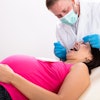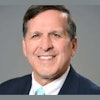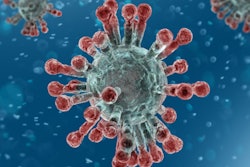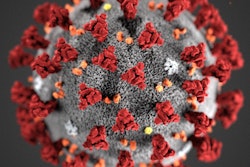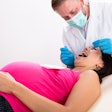COVID-19 FAQs, page 14
14. What are some of the problems that COVID-19 presents to medical and dental practitioners?
This pandemic is presenting some significant and unique challenges to dentistry and the whole healthcare system. Everyone must work together to identify PUIs and get them tested and isolated until they recover or are admitted to a hospital for respiratory management.
With the high number of flu cases in the U.S. this year, hospitals are almost maxed out. Every year, a surge capacity is built into the hospital availability and supply chain. Although hospitals often stretched, patient needs are generally met. However, if a large number of high-level respiratory cases are suddenly thrust upon the hospitals, the beds may not be there, there might not be enough doctors and nurses, there will be a shortage of respirators, and personal protective equipment (PPE) will be expended at an alarming rate.
Due to the ease of transmission, COVID-19 patients will require isolation and require everyone in the area to don respiratory protection, which dramatically uses up existing supplies of critical PPE and other supplies. Ordinarily, these depleted supplies could be readily replaced. But many, if not most, of our critical supplies, inclusive of PPE, come from China. This is especially true for facemasks, gowns, sterile wraps, etc. Hand sanitizer supplies also are in short supply. This has created an almost crisis situation.
However, there is some light at the end of the tunnel. China is beginning to reopen their closed-down plants, and there are federal initiatives to develop domestic manufacturers to produce these products, but this will take time.
There may also be a shortage of critical healthcare personnel. Doctors, nurses, first responders (emergency medical technicians [EMTs], fire, police) may be exposed to COVID-19 in the first waves of the infection, resulting in exposure and/or infection. This may require quarantining these individuals, resulting in a shortage of these critical people. This is currently happening in Italy, where they are calling on retired physicians, nurses, and other healthcare personnel to reenter practice until this disease is under control.
COVID-19 could have a significant impact on dentistry. To minimize this, it is paramount that dental practitioners adhere to the CDC infection-control guidelines. Masks seem to be the most problematic issue. A facemask should be used for every patient contact for which there is anticipated spray and spatter. When the mask is exposed to patient-generated spray and spatter, the mask is contaminated and, thus, must not be used for more than one patient and should be discarded after that single use. Reuse of a facemask for multiple patients is not acceptable.
Hopefully, this supply chain issue will be resolved very soon, and all PPE will again be readily available. Until then, everyone must comply with CDC recommendations. Dental healthcare providers should ensure that they stay well informed about COVID-19. Frequently review the CDC website and monitor the disease progression in your community.
Finally, be aware of scams due to the COVID-19 outbreak. Unfortunately, during times of uncertainty and shortages of critical supplies, there are unscrupulous individuals who attempt to profit from others' misfortune. Many scams have been reported. These include selling useless products that claim prevention and/or treatment of COVID-19. Price gouging is commonplace, especially for hand sanitizer and any type of facemask. Be on the lookout for these scams. If it looks too good to be true, it probably isn't true.
Louis DePaola, DDS, is the associate dean of clinical affairs and a professor in the department of oncology and diagnostic sciences at the University of Maryland School of Dentistry in Baltimore. Active in research, he has authored and co-authored more than 130 journal articles, book chapters, and abstracts and serves as a consultant to the American Dental Association and numerous other professional groups and private industry. He can be reached at [email protected].
References
- Coronavirus disease 2019 (COVID-19). Centers for Disease Control and Prevention website. https://www.cdc.gov/coronavirus/2019-nCoV/index.html. Updated March 12, 2020. Accessed March 12, 2020.
- Coronavirus disease 2019 (COVID-19) in the U.S. Centers for Disease Control and Prevention website. https://www.cdc.gov/coronavirus/2019-ncov/cases-in-us.html. Updated March 12, 2020. Accessed March 12, 2020.
- Coronavirus disease (COVID-2019) situation reports 1-52. World Health Organization website. https://www.who.int/emergencies/diseases/novel-coronavirus-2019/situation-reports/. Updated March 12, 2020. Accessed March 12, 2020.
- COVID-19. Johns Hopkins Bloomberg School of Public Health Center for Health Security website. https://centerforhealthsecurity.org/our-work-at-the-center-for-health-security. Accessed March 12, 2020.
- Guidelines for infection control in dental health-care settings -- 2003. MMWR Recomm Rep. 2003;52(RR-17):1-68. https://www.cdc.gov/mmwr/preview/mmwrhtml/rr5217a1.htm. Accessed March 12, 2020.
- Infection Prevention Checklist for Dental Settings: Basic Expectations for Safe Care. Centers for Disease Control and Prevention website. March 28, 2016. https://www.cdc.gov/oralhealth/infectioncontrol/pdf/safe-care-checklist.pdf. Accessed March 12, 2020.
- Severe acute respiratory syndrome (SARS). World Health Organization website. https://www.who.int/csr/sars/en/. Accessed March 12, 2020.
- Summary of Infection Prevention Practices in Dental Settings: Basic Expectations for Safe Care. Centers for Disease Control and Prevention website. March 28, 2016. https://www.cdc.gov/oralhealth/infectioncontrol/pdf/safe-care2.pdf. Accessed March 12, 2020.
- Wu Z, McGoogan JM. Characteristics of and important lessons from the coronavirus disease 2019 (COVID-19) outbreak in China: Summary of a report of 72 314 cases from the Chinese Center for Disease Control and Prevention. JAMA. February 24, 2020. doi: 10.1001/jama.2020.2648. Accessed March 12, 2020.
Previous page | 14


